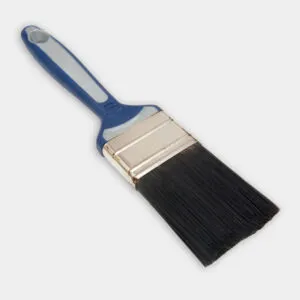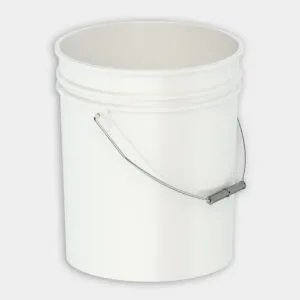Project details
Skill
Cost
Estimated Time
Restaining your deck can breathe new life into weathered wood, protecting it from the elements and enhancing its appearance. A fresh stain can prevent moisture from penetrating the wood, protect against harmful UV rays, and reduce the wood’s tendency to crack and splinter over time. Retaining involves more than just applying a fresh coat of stain—it requires proper preparation and technique to achieve lasting results. In this article, we’ll guide you through how to restain your deck. Mauro Henrique, a painting expert from This Old House, demonstrates the correct techniques for restaining a mahogany deck in the video above.
Signs It’s Time To Restain Your Deck
Over time, exposure to sun, rain, and foot traffic can deteriorate your deck’s finish. Signs that your deck needs restaining include the following:
- Fading or graying of the wood
- Splintering or a rough texture
- Visible wear in high-traffic areas
- Water no longer beading on the surface
Preparing Your Deck for Restaining
Cleaning your deck, inspecting it for damage, and sanding it down will help you achieve a top-notch finish.
Cleaning the Deck
Start by removing all furniture and potted plants from your deck. Use a leaf blower to clear away loose debris, leaves, and dirt. Consider using a pressure washer or a deck cleaner to remove stubborn grime and mildew. Make sure the deck dries completely before proceeding.
Inspection and Repairs
Inspect your deck for any damaged boards, loose nails, or screws. Replace any damaged boards and check that all fasteners are secure. Fixing these problems beforehand will give you a smooth, safe surface for staining.
Sanding the Surface
If you have old stain or splinters, sand your deck before moving on to staining. Remember to sand in the direction of the wood grain. As demonstrated in the video, follow these steps:
- Begin by sanding the edges of the deck with 40-grit sandpaper using a palm sander.
- For the main deck area, rent a drum floor sander from a home center.
- Start with 40-grit sandpaper on the floor sander to remove the old finish and smooth out rough spots.
- Follow up with 60-grit sandpaper for a finer finish.
- Complete the sanding process with 80-grit sandpaper to achieve a smooth surface ready for staining.
- Vacuum or sweep away all sanding dust before applying the new stain.
Choosing the Right Deck Stain
These are the three main types of deck stains:
- Transparent stains: These allow the wood grain to show through while providing minimal color.
- Semi-transparent stains: These stains offer more color while still showcasing some wood grain.
- Solid stains: Opaque stains provide the most color and coverage, hiding the wood grain entirely.
Each type of stain offers different levels of protection. Transparent stains are perfect for highlighting the natural beauty of the wood but may require more frequent reapplication. Semi-transparent stains strike a balance between showing off the wood grain and providing durable protection, making them a popular choice for many homeowners. Solid stains offer the most robust protection and a uniform color, ideal for decks with uneven or unattractive wood grain.
Oil-Based vs. Water-Based Stains
Oil-based stains penetrate deep into the wood, providing long-lasting protection and rich, deep color. However, they take longer to dry and can be more challenging to clean. Water-based stains are easier to apply and clean, dry more quickly, and are more environmentally friendly. However, they may not penetrate wood as deeply and require more frequent maintenance.
For the project featured in the video, Henrique uses a transparent penetrating wood oil in a natural finish manufactured by PPG, which can be found at most home centers. This finish is ideal for showcasing the natural beauty of mahogany while still protecting the wood. The other tools Henrique used to apply the stain, including the paintbrushes, extension pole and the lamb’s wool applicator pad, can also be found at home centers.
Applying the New Stain
After completing the preparation, you’re ready to apply the new stain. Follow these steps for the best results.
Edging and Detail Work
Pour the stain into a bucket for easier handling. Use a 3-inch nylon-polyester paintbrush to apply the stain around the edges of the deck and in hard-to-reach areas. Work the stain into the wood grain for even coverage.
Staining the Main Deck Area
Once the edges are complete, move onto the main deck. Follow these steps to apply stain to this area:
- Pour some stain into a paint tray.
- Use a lamb’s wool applicator attached to an extension pole for the main deck surface.
- Apply the stain in long, even strokes, working with the wood grain.
- Maintain a wet edge to avoid lap marks and achieve consistent coverage.
Achieving a Professional Finish
Thin, even coats will penetrate the wood properly without creating build-up, which can peel or crack over time. Here are a few extra tips to achieve a beautiful, long-lasting finish:
- Apply a generous coat of stain, but spread it well to avoid puddles or uneven areas.
- Keep the applicator pad wet by dipping it frequently in the stain.
- Work in manageable sections to maintain a wet edge throughout the process.
- Allow the first coat to dry completely (usually 24 hours) before applying a second coat for deeper color and protection.
Maintaining Your Newly Stained Deck
To keep your deck looking its best, regular maintenance is key. Clean the deck annually with a mild detergent or deck cleaner and a soft brush. This helps prevent the build-up of dirt, mold, and mildew, preserving the appearance and integrity of the stain.
Reapply a maintenance coat of stain every year to reinforce the wood’s protection against weather elements. This involves a simple cleaning and a single coat of stain—no sanding required.
Keep an eye on high-traffic areas where the stain might wear faster. Touch up these spots as needed to avoid more significant degradation. Pay special attention to areas around furniture and entrances, as these spots usually show wear and tear earlier than other parts of the deck.
Expert assistance with this segment was provided by Mauro’s Painting.
Shop Wood Stain at The Home Depot
Shopping List:
40/60/80 grit sandpaper
Penetrating wood oil
Lamb’s wool applicator
Paint tray
(Available via The Home Depot)




